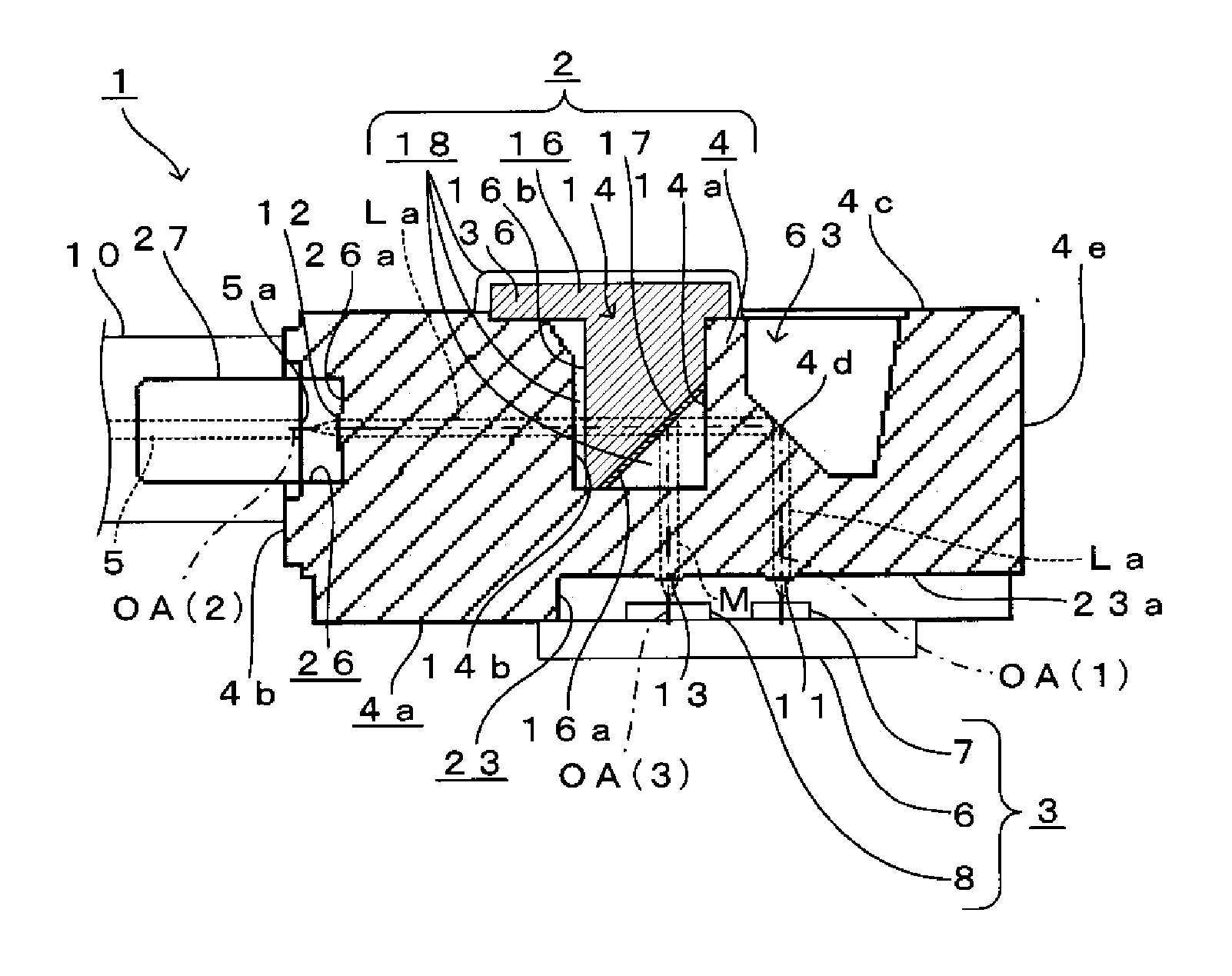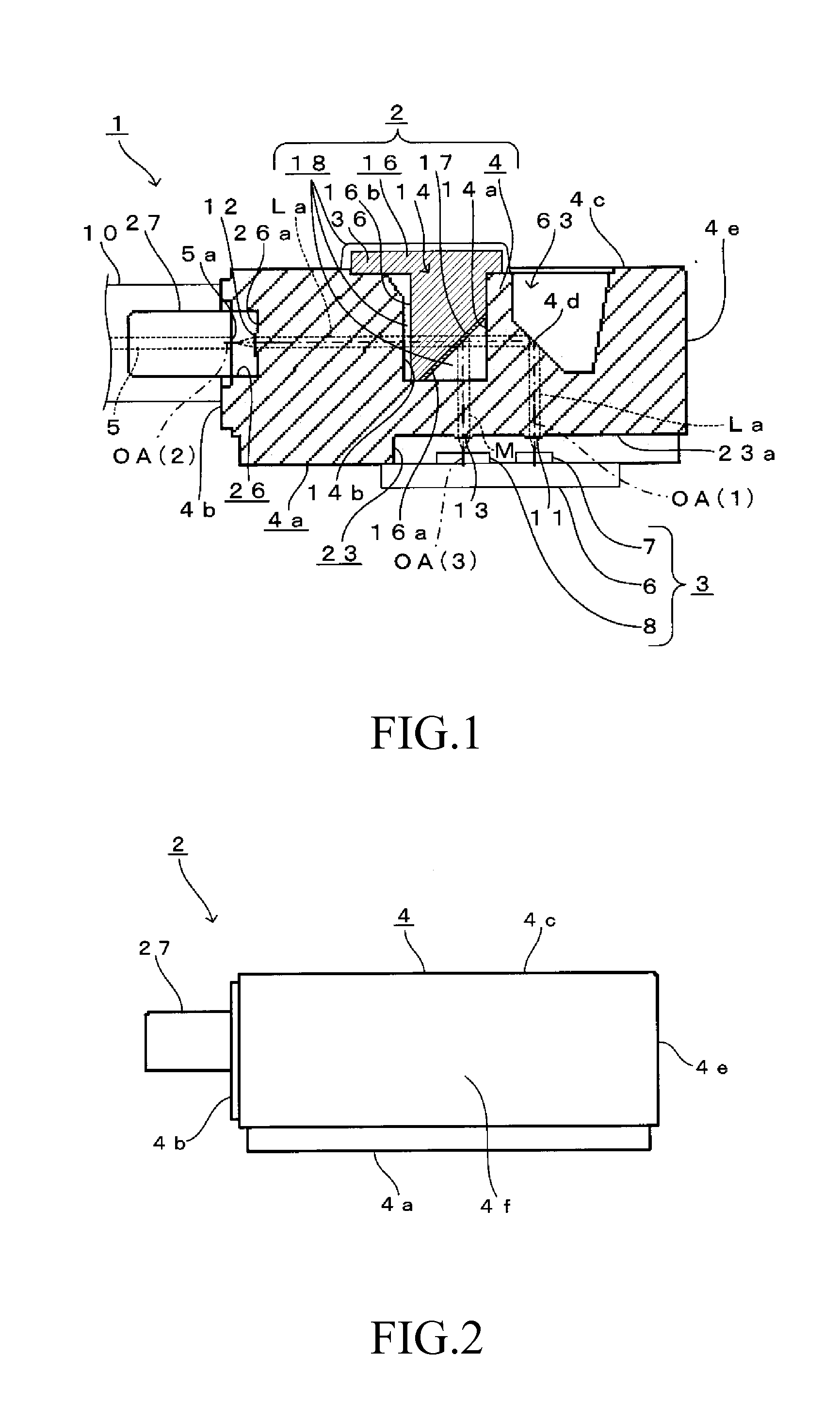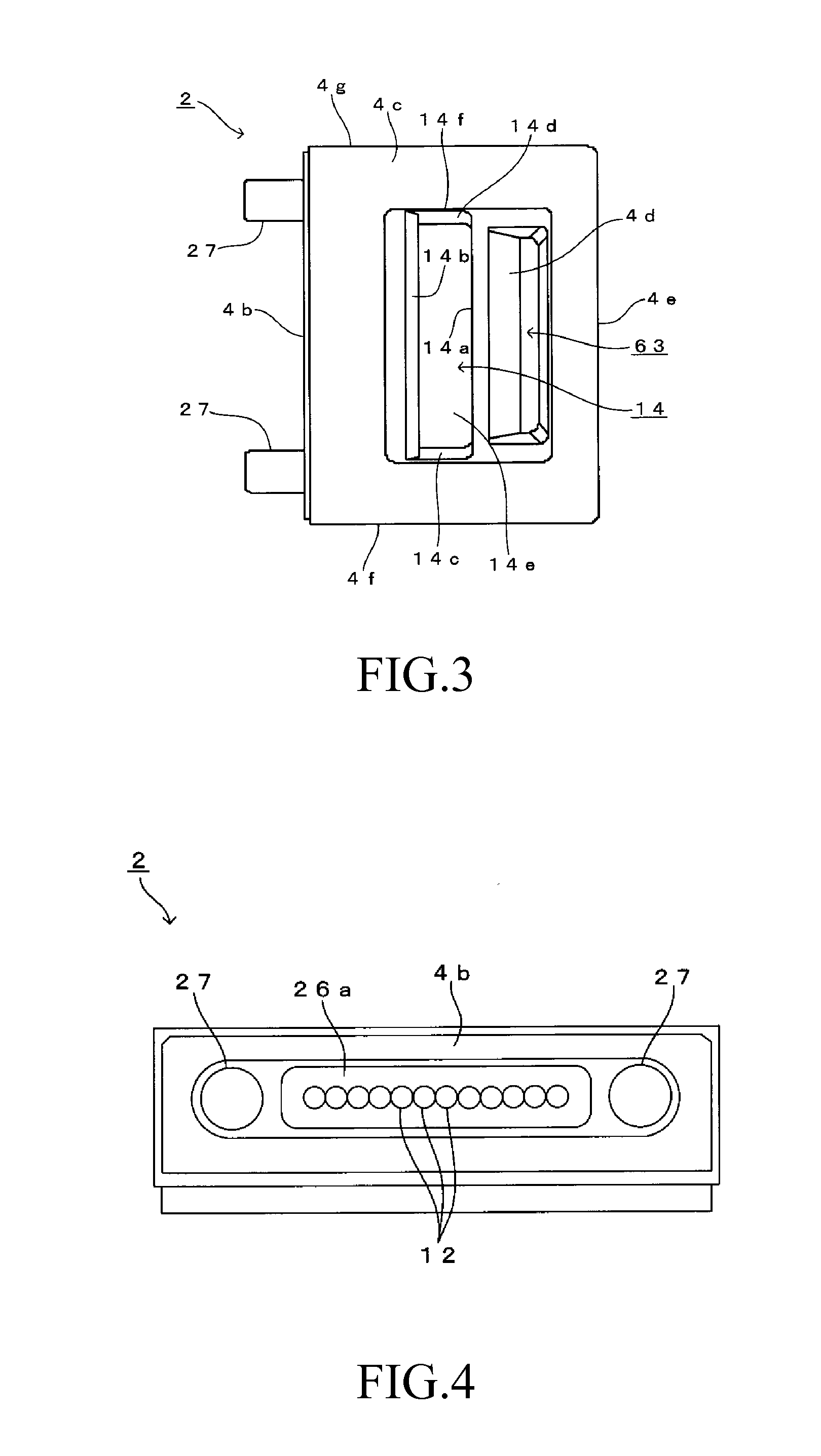Lens array and optical module including the same
a technology of optical modules and arrays, applied in the field of lenses arrays and optical modules, can solve problems such as the risk of disruption in the appropriate transmission of communication information, and achieve the effect of improving the temperature stability and the optical performance of the sam
- Summary
- Abstract
- Description
- Claims
- Application Information
AI Technical Summary
Benefits of technology
Problems solved by technology
Method used
Image
Examples
first embodiment
[0164]A lens array and an optical module including the lens array according to a first embodiment of the present invention will hereinafter be described with reference to FIG. 1 to FIG. 18.
[0165]Here, FIG. 1 is an overall configuration diagram of an overview of an optical module 1 according to the present embodiment, together with a vertical cross-sectional view of a lens array 2 according to the present embodiment. In addition, FIG. 2 is a front view of the lens array 2 shown in FIG. 1. FIG. 3 is a planar view of the lens array 2 shown in FIG. 1. FIG. 4 is a left-side view of the lens array 2 shown in FIG. 1. FIG. 5 is a right-side view of the lens array 2 shown in FIG. 1. FIG. 6 is a bottom view of the lens array 2 shown in FIG. 1.
[0166]As shown in FIG. 1, the lens array 2 according to the present embodiment is disposed between a photovoltaic device 3 and optical fibers 5.
[0167]Here, the photovoltaic device 3 has a plurality of light-emitting elements 7 on a surface of a semicondu...
examples
[0232]Examples of the present invention will be described with reference to FIG. 10 and FIG. 11.
[0233]FIG. 10 shows the simulation results for optical coupling efficiency using the lens array 2 based on design between light-emitting sections (light-emitting elements) of a VCSEL including a monitor PD as the photovoltaic device 3 and the end faces 5a of multi-mode optical fibers 5 having a diameter of 50 μm, as specific simulation results for determining the first tolerance W1.
[0234]The vertical axis in FIG. 10 indicates the optical coupling efficiency between the VCSEL and the fibers as coupling loss (dB). The horizontal axis in FIG. 10 indicates a movement width [μm] from a point of origin under a premise that the VCSEL is moved in the direction perpendicular to the optical axis OA(1) of the first lens faces 11 from the attachment position (point of origin on the horizontal axis) to the lens array 2 at which the optical coupling efficiency becomes the maximum efficiency based on de...
second embodiment
[0264]Next, a lens array and an optical module including the lens array according to a second embodiment of the present invention will be described with reference to FIG. 19 to FIG. 87, mainly focusing on the differences with the first embodiment.
[0265]Sections of which the basic configuration is the same or similar to that according to the first embodiment are described using the same reference numbers.
[0266]FIG. 19 is a front view of the lens array 2 according to the present embodiment. FIG. 20 is a planar view of FIG. 19. FIG. 21 is a bottom view of FIG. 19. The left-side view of FIG. 19 is similar to FIG. 4.
[0267]The lens array 2 according to the present embodiment is used to optically couple the photovoltaic device 3 and the optical fibers 5 in a state in which the photovoltaic device 3 and the optical fibers 5 are attached to the lens array 2 (not shown), in a manner similar to that according to the first embodiment.
[0268]However, as shown in FIG. 19 to FIG. 21, unlike that ac...
PUM
 Login to View More
Login to View More Abstract
Description
Claims
Application Information
 Login to View More
Login to View More - R&D
- Intellectual Property
- Life Sciences
- Materials
- Tech Scout
- Unparalleled Data Quality
- Higher Quality Content
- 60% Fewer Hallucinations
Browse by: Latest US Patents, China's latest patents, Technical Efficacy Thesaurus, Application Domain, Technology Topic, Popular Technical Reports.
© 2025 PatSnap. All rights reserved.Legal|Privacy policy|Modern Slavery Act Transparency Statement|Sitemap|About US| Contact US: help@patsnap.com



